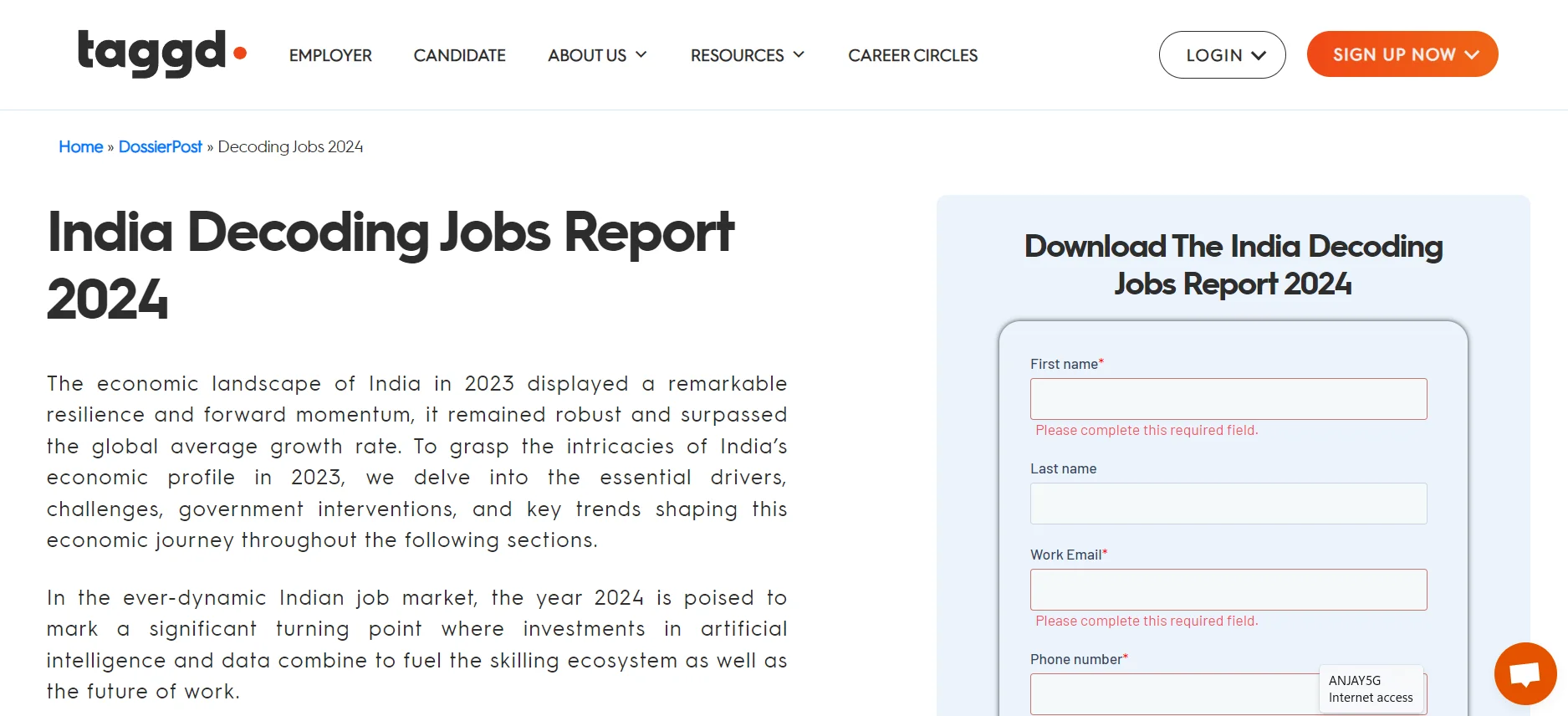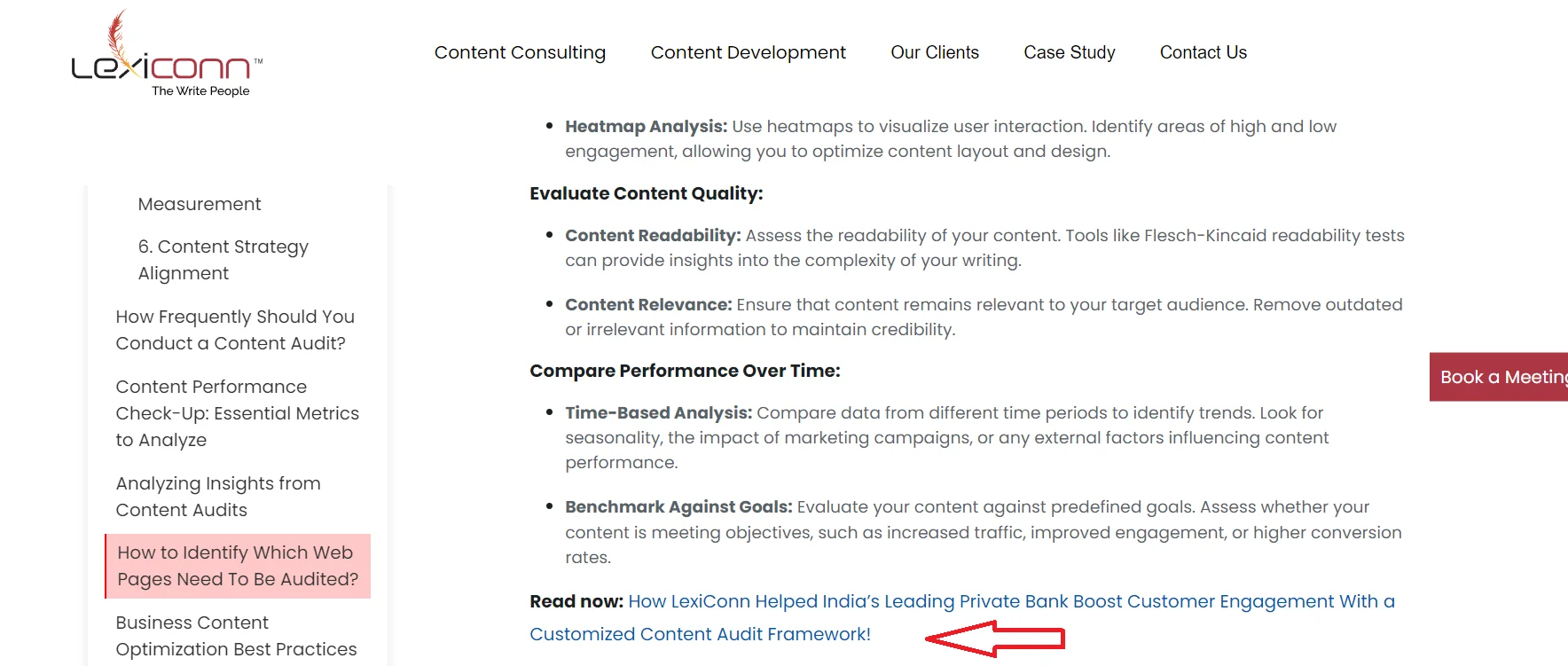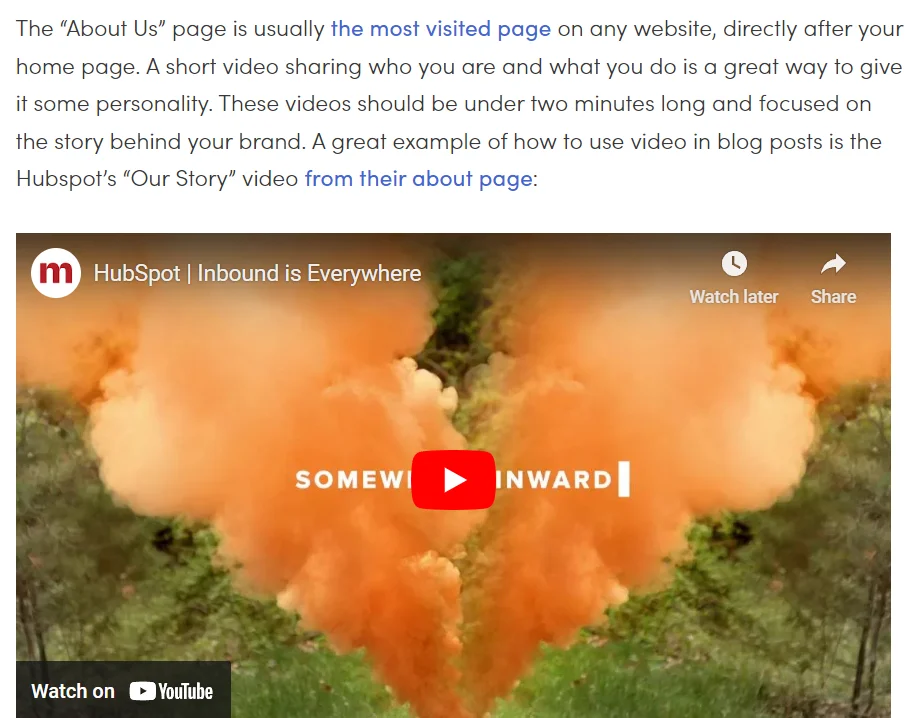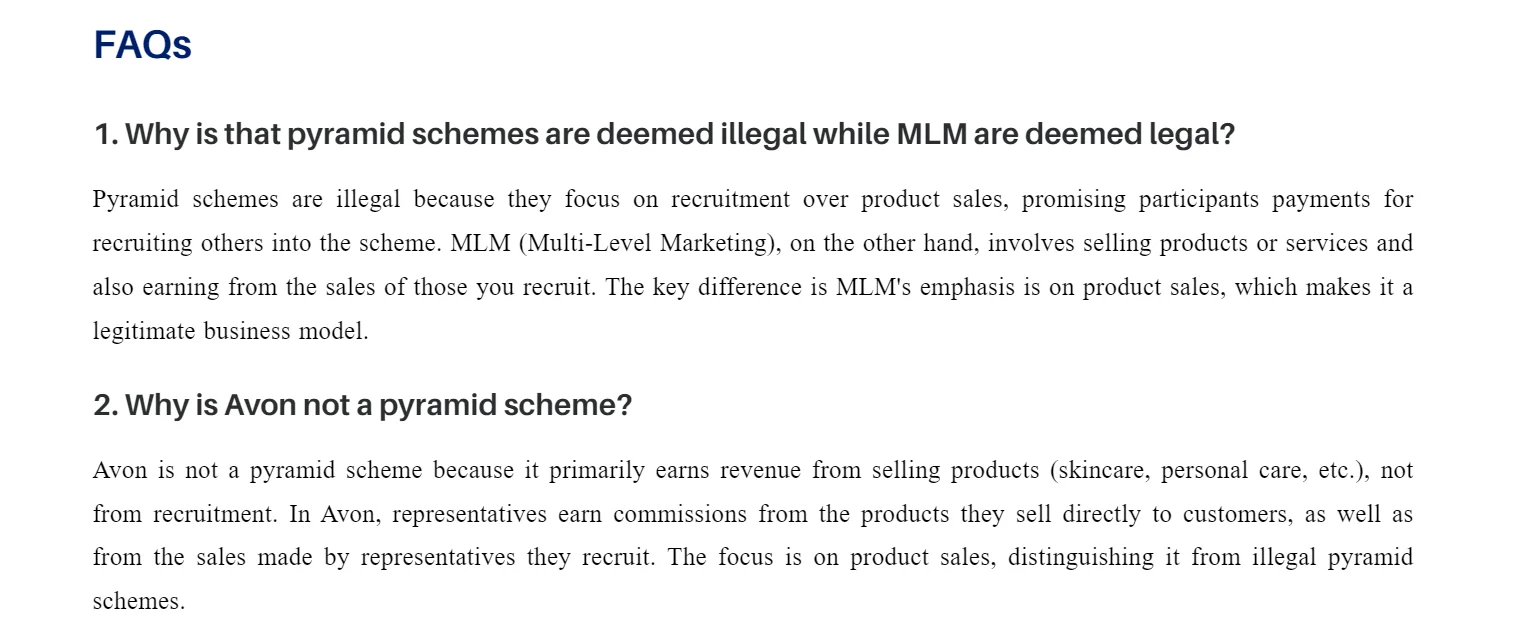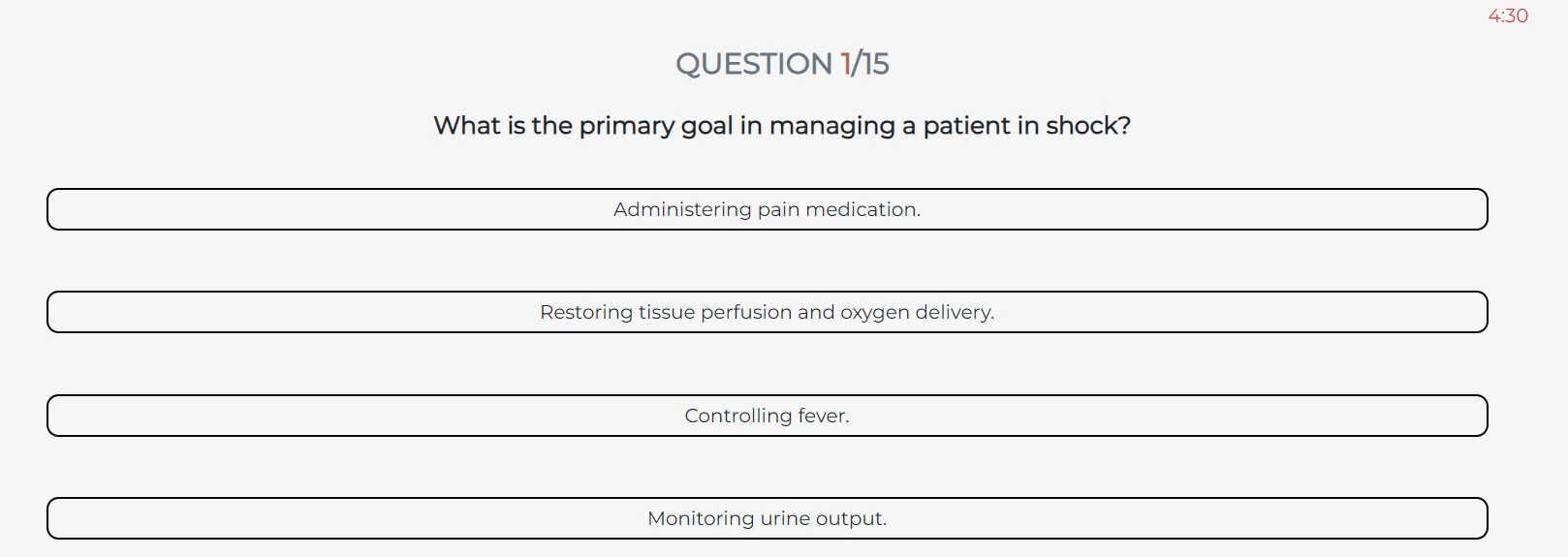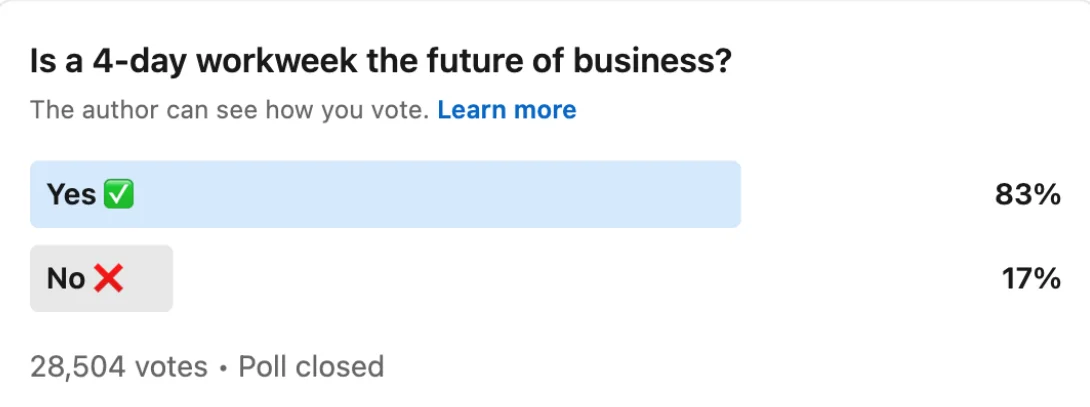High-quality SEO article writing is crucial for boosting your website's visibility and drawing in organic traffic. Not only does it help your site rank higher on search engine results pages (SERPs), builds audience trust, establishes your organization as an authority, enhances user experience, and, most importantly, increases on-site conversions.
By optimizing your content for SEO, you ensure that your visitors have a better experience. They can easily find the answers or information they're seeking, leading to greater satisfaction and engagement with your site.
Mastering SEO goes beyond incorporating keywords and backlinks. It requires a deep understanding of user intent, advanced optimization techniques, and a commitment to quality. This guide will provide a detailed roadmap to help you optimize your SEO articles and achieve superior search rankings. We will share expert tips, demonstrate SEO article writing examples, and more.
Embrace the Principles of E-E-A-T (Expertise, Authoritativeness, Trustworthiness)
Google's E-E-A-T (Experience, Expertise, Authoritativeness, Trustworthiness) framework has been pivotal in determining the quality and reliability of web content. As search algorithms become more sophisticated, E-E-A-T remains a critical element for SEO optimization. It ensures that the content displayed in search results is relevant, credible, and valuable to users.
Experience & Expertise: Mastery of Your Domain
Experience and expertise form the bedrock of compelling content. It demands more than surface-level knowledge; it requires:
-
Depth and Insight: Content should delve beyond superficial explanations, offering nuanced insights and strategic depth. For example, elucidate advanced techniques like semantic keyword optimization and predictive analytics in search engine algorithms instead of merely outlining SEO practices.
-
Demonstrable Authority: Back assertions with concrete evidence from reputable sources—industry studies, peer-reviewed articles, and expert interviews. Such substantiation enriches your SEO article writing and fortifies its credibility.
Source
(Example of a detailed industry report -
source - Taggd)
-
Real-World Relevance: Connect theoretical knowledge with practical applications. Readers appreciate actionable advice grounded in real-world scenarios, such as case studies demonstrating successful implementation of digital marketing strategies.
Authoritativeness: Establishing Thought Leadership
Authoritativeness is the hallmark of content that commands respect and influence. To cultivate it, focus on:
-
Credible Credentials: Showcase your credentials prominently—accreditations, certifications, and industry affiliations. These affirmations of expertise reassure readers of your authority on the subject matter.
-
Building a Reputation: Cultivate relationships within your industry to garner endorsements and collaborations. Collaborative content with recognized industry leaders enhances your content’s authority and widens its reach.
-
Consistency and Reliability: Regularly publishing well-researched, insightful content fosters a reputation for reliability. Consistency builds trust and reinforces your position as a go-to resource in your niche.
Trustworthiness: Foundation of Credibility
Trustworthiness is non-negotiable in content creation. It involves:
-
Transparency and Integrity: Disclose any potential conflicts of interest or biases. Transparency fosters trust by demonstrating ethical conduct and honesty in your content.
-
User-Centric Focus: Prioritize user experience—ensure your website is secure, navigable, and free of deceptive practices. A positive user experience bolsters credibility and encourages return visits.
-
Social Proof: Incorporate testimonials, reviews, or case studies that attest to your expertise and reliability. Social proof reinforces trust and validates your content’s value to readers.
SEO Content Writing Examples: Bringing It All Together
Imagine crafting an article titled "The Future of AI in Healthcare":
-
Expertise: Explore cutting-edge AI applications in diagnostics and personalized medicine, supported by insights from leading researchers and healthcare practitioners.
-
Authoritativeness: Include perspectives from renowned AI experts and healthcare leaders, discussing industry trends and regulatory implications.
-
Trustworthiness: Feature case studies of healthcare institutions successfully integrating AI technologies, accompanied by patient testimonials and endorsements from healthcare professionals.
Discover how LexiConn's expert SEO article writing team helped Amazon leverage informative business articles to engage SME buyers and drive growth on Amazon Business, its B2B e-commerce platform.
Content is Still King
The quality of your content is paramount to your success in search engine rankings. High-quality, original SEO article writing that delivers real value attracts and retains audience attention and signals to search engines that your site is a trustworthy and authoritative source.
Tips for High-Quality SEO Article Writing
Original Research
-
Conducting Original Research:
-
Why It Matters: Original research sets your content apart by providing unique insights that cannot be found elsewhere. This establishes your authority in the field and encourages other websites to link to your content, boosting your SEO through high-quality backlinks.
-
How to Implement: Identify key questions and gaps in your industry that lack substantial data. Design and conduct surveys, experiments, or case studies to gather data. For example, if you're in the tech industry, you might survey emerging trends in artificial intelligence.
-
Presenting Findings: Once you have collected data, present your findings clearly and compellingly. Use data visualization tools to create charts, graphs, and infographics that make complex information accessible and engaging. Accompany these visuals with detailed explanations and analysis.
Source
(Example of visual representation of data -
source - Team Lease)
-
Publishing Insights:
-
Why It Matters: Publishing well-documented research not only enhances your reputation but also contributes to the body of knowledge in your industry.
-
How to Implement: Write comprehensive reports or whitepapers on your research findings. Offer these as downloadable resources on your website and promote them through email marketing and social media channels. This approach drives traffic and encourages backlinks from other authoritative sites.
Comprehensive Guides
-
Writing In-Depth Articles:
-
Why It Matters:
Comprehensive SEO article writing thoroughly covers a topic, offering readers a valuable resource that addresses all their questions and needs. This depth of content keeps readers on your site longer and improves your search rankings by meeting Google’s criteria for high-quality content.
-
How to Implement:
Choose topics that are relevant and have a significant search volume. Break down complex subjects into manageable sections and address each aspect thoroughly. For instance, if you’re writing a guide on digital marketing strategies, cover everything from SEO and content marketing to social media and email campaigns.
-
Structuring Content:
Use a clear and logical structure with headings and subheadings to make the SEO article writing easy to navigate. Include a table of contents at the beginning to help readers quickly find the information they need.
-
Ensuring Exhaustive Coverage:
-
Why It Matters:
Covering all relevant aspects of a topic ensures that your content becomes the go-to resource, increasing its chances of being shared and linked to.
-
How to Implement:
Supplement your articles with additional resources like checklists, templates, and case studies. Provide actionable tips and real-world examples to help readers apply the information. Encourage feedback and update your guides regularly to keep them current and accurate.
Source
(Example of a case study attached to an article -
source - LexiConn)
Visual Content in SEO Article Writing
-
Incorporating Images:
-
Why It Matters:
High-quality images can make your content more engaging and easier to understand. They break up text, illustrate points, and improve user experience, which can reduce bounce rates and increase the time users spend on your site.
Source
(Example of a video in an article -
source - Themeisle)
-
How to Implement:
Create videos that complement your written content. These can be tutorials, explainer videos, interviews, or behind-the-scenes looks at your processes. Host videos on platforms like YouTube or Vimeo and embed them in your articles. Ensure they are optimized with appropriate keywords, titles, and descriptions to enhance search visibility.
-
Creating Infographics:
-
Why It Matters:
Infographics condense complex information into an easily digestible visual format. They are highly shareable, which can increase your reach and attract backlinks.
-
How to Implement:
Identify data-rich sections of your content that could benefit from visual representation. Use tools like Canva or Adobe Illustrator to create visually appealing infographics. Ensure they are clear, well-designed, and accurately reflect the data. Include an embed code to allow others to share your infographic on their sites.
LexiConn's expert article-writing services today.
Leverage Semantic SEO
Semantic SEO is an advanced approach to search engine optimization that emphasizes understanding the intent and contextual meaning behind search queries rather than relying solely on individual keywords.
As search engines like Google become more sophisticated, they increasingly focus on the relationships between words and the context in which they are used. Creating content that addresses the broader themes and concepts related to a query is crucial for achieving higher search rankings.
Implementing Semantic SEO
Use LSI Keywords
Latent Semantic Indexing (LSI) Keywords:
LSI keywords are terms and phrases contextually related to your main keyword. They help search engines understand the content’s topic and relevance more comprehensively. By incorporating LSI keywords, you can improve the semantic richness of your content, making it more likely to rank well for various related searches.
-
How to Implement:
Identify LSI keywords using tools like Google’s “Searches related to” feature at the bottom of the SERP, LSI Graph, or keyword research tools such as SEMrush and Ahrefs. These tools provide a list of terms contextually related to your primary keyword.
Example:
-
Main Keyword: “Digital Marketing Strategies”
-
LSI Keywords: “SEO tactics,” “content marketing,” “social media marketing,” “email marketing campaigns,” “online advertising,” “inbound marketing strategies,” “PPC advertising.”
Incorporating LSI Keywords:
Seamlessly incorporate LSI keywords into your content. For example, if you’re writing about “Digital Marketing Strategies,” ensure that you naturally mention related terms like “SEO tactics” and “content marketing” within the context of your discussion. This enriches the content and helps search engines understand the breadth of your topic coverage.
Enhancing Content Depth:
-
Topic Clusters:
Use LSI keywords to create topic clusters, where a central “pillar” page covers the main topic broadly, and several related “cluster” pages delve into specific aspects in detail. This structure helps search engines recognize the depth and breadth of your expertise on the topic.
Answer User Intent
Understanding User Intent:
Modern SEO requires a deep understanding of user intent, the underlying goal or purpose behind a user’s search query. Search engines aim to provide results that best satisfy this intent, whether it’s informational, navigational, transactional, or commercial investigation. Creating content that aligns with user intent is essential for achieving high search rankings and providing value to your audience.
Types of User Intent:
-
Informational Intent:
Users are seeking information or answers to specific questions. They are not necessarily looking to purchase but rather to learn more about a topic.
Source
(Example of a user-intent article - source - Self)
- Navigational Intent: Users are trying to find a specific website or page. For example, searching for “Facebook login” indicates a desire to navigate directly to Facebook’s login page.
- Transactional Intent: Users are ready to purchase or complete a specific action, such as signing up for a service or buying a product.
- Commercial Investigation Intent: Users are researching products or services to make a purchase shortly. They may compare options, read reviews, and look for recommendations.
Creating Content to Satisfy User Intent:
- Research and Analysis: Use tools like Google Analytics, Search Console, and keyword research platforms to analyze what users are searching for and what content currently ranks well for those queries. Examine the language and context of the queries to identify the intent behind these searches.
- Answering Specific Questions: Create content that directly addresses the questions and needs of your audience. Here, SEO content writing examples include: If users are searching for “how to improve website SEO,” a comprehensive guide that outlines actionable steps, provides tips, and includes real-world examples will satisfy their informational intent.
- Providing Comprehensive Solutions: Ensure your content is not superficial but offers in-depth solutions. For transactional intent, include clear calls to action, pricing information, and purchase options. For informational content, provide detailed explanations, how-to guides, and expert insights.
Optimizing Content for User Intent:
-
Content Structure: Use clear headings, subheadings, and bullet points to make your content easy to scan and navigate. This helps users quickly find the information they need, improving their experience and reducing bounce rates.
-
Engagement and Interaction: Include interactive elements like quizzes, calculators, and Q&A sections to engage users and address their queries dynamically. For example, a “find the best SEO strategy for your business” quiz can help users identify their needs and engage them.
-
Source
Rich Snippets and Schema Markup:
Use schema markup to help search engines understand the context of your content and provide rich snippets in search results. This can improve your visibility and click-through rates. For instance, implementing FAQ schema for common questions related to your topic can help your answers appear directly in search results.
|
Explore our specialized article writing service and transform your content strategy!
Get in touch now
!
|
Build a Robust Backlink Profile
Backlinks, also known as inbound links in SEO article writing, are a cornerstone of SEO because they act as endorsements from other websites. When authoritative sites link to your content, they signal to search engines like Google that it is valuable, credible, and worth referencing. This enhances your site's authority and trustworthiness and boosts its visibility in search engine results pages (SERPs).
A robust backlink profile is crucial for achieving and maintaining high search rankings, as it reflects the collective vote of confidence from other sites within your industry.
Strategies for Earning Backlinks
Guest Blogging
Why It Matters: Guest blogging is a powerful strategy for earning high-quality backlinks while establishing authority in your industry. By contributing valuable content to reputable sites, you gain exposure to new audiences and build relationships with influential figures in your niche.
How to Implement:
- Identify Target Sites:
- Use tools like Ahrefs, SEMrush, or Google search operators to find reputable blogs and websites that accept guest posts in your industry. Focus on sites with high domain authority and engaged audiences.
- Craft High-Quality Content:
- Write insightful and well-researched articles that provide real value to the target site's audience. Ensure the content aligns with the site's tone, style, and topics of interest.
- Pitch Your Ideas:
- Reach out to the target sites with personalized pitches. Highlight your expertise, suggest relevant topics, and provide previous work samples. Tailor each pitch to demonstrate how your content will benefit their audience.
- Include Relevant Links:
- Within your guest post, naturally, incorporate links to your content where relevant. Ensure these links add value to the article and are contextually appropriate.
Content Partnerships
Why It Matters: Collaborating with other content creators allows you to tap into their audience and network, providing mutual benefits regarding exposure and credibility. Content partnerships can lead to various backlink opportunities and broaden your reach.
How to Implement:
- Identify Potential Partners:
- Look for complementary brands, influencers, and content creators within your industry. Evaluate their audience size, engagement levels, and content quality.
- Propose Collaborative Projects:
- Suggest co-creating content such as blog series, webinars, infographics, or e-books. These collaborative efforts should provide value to both audiences and highlight the strengths of each partner.
- Promote and Share Content:
- Once the collaborative content is published, both parties should actively promote it through their channels. This cross-promotion increases visibility and attracts backlinks from diverse sources.
- Maintain Relationships:
- Continue to nurture these partnerships by engaging with their content, sharing insights, and exploring future collaboration opportunities.
Skyscraper Technique
Why It Matters: The Skyscraper Technique is a content strategy that involves creating superior content that surpasses existing articles in terms of quality, depth, and usefulness. By offering better resources, you can attract backlinks from sites linking to less comprehensive content.
How to Implement:
- Identify Popular Content:
- Use tools like BuzzSumo or Ahrefs to find high-performing content in your niche. Look for articles with a substantial number of backlinks and social shares.
- Create Superior Content:
- Analyze the identified content to understand its strengths and weaknesses. Develop a more detailed, updated, and visually appealing version. Incorporate original research, data, and insights to make your content stand out.
- Outreach to Linkers:
- Reach out to the websites linking to the original content. Introduce your superior article and explain how it provides more value. I politely suggest that they link to your content as a better resource.
- Promote Your Content:
- Share your new content through social media, email newsletters, and industry forums. Engage with your audience and encourage them to share and link to your article.
Enhance On-Page SEO
Optimizing on-page elements is crucial for improving your article's search engine rankings. On-page SEO enhances individual web pages to achieve higher rankings and drive relevant traffic. This involves optimizing both the content and HTML source code of a page.
Key On-Page SEO Practices
Title Tags
Why It Matters: Title tags are one of the most important on-page SEO elements because they define the title of your web page and appear as clickable headlines in SERPs. A well-crafted title tag can significantly impact your page's visibility and click-through rate (CTR).
How to Implement:
- Incorporate Keywords:
- Include primary keywords naturally within your title tags. Ensure the keywords are placed towards the beginning for maximum impact.
- Keep it Compelling:
- Write engaging and descriptive titles that entice users to click. Use action words and numbers where appropriate to create urgency and interest.
- Maintain Optimal Length:
- Keep your title tags within 50-60 characters to ensure they are fully displayed in SERPs. Avoid truncation that might obscure important information.
- Unique Titles for Each Page:
- Ensure each page on your site has a unique title tag that accurately reflects its content. This helps search engines differentiate between pages and improves relevance.
Meta Descriptions
(Example of a meta description - link)
-
Rich Snippets and Schema Markup:
Use schema markup to help search engines understand the context of your content and provide rich snippets in search results. This can improve your visibility and click-through rates. For instance, implementing FAQ schema for common questions related to your topic can help your answers appear directly in search results.
|
Explore our specialized article writing service and transform your content strategy!
Get in touch now
!
|
Build a Robust Backlink Profile
Backlinks, also known as inbound links in SEO article writing, are a cornerstone of SEO because they act as endorsements from other websites. When authoritative sites link to your content, they signal to search engines like Google that it is valuable, credible, and worth referencing. This enhances your site's authority and trustworthiness and boosts its visibility in search engine results pages (SERPs).
A robust backlink profile is crucial for achieving and maintaining high search rankings, as it reflects the collective vote of confidence from other sites within your industry.
Strategies for Earning Backlinks
Guest Blogging
Why It Matters: Guest blogging is a powerful strategy for earning high-quality backlinks while establishing authority in your industry. By contributing valuable content to reputable sites, you gain exposure to new audiences and build relationships with influential figures in your niche.
How to Implement:
- Identify Target Sites:
- Use tools like Ahrefs, SEMrush, or Google search operators to find reputable blogs and websites that accept guest posts in your industry. Focus on sites with high domain authority and engaged audiences.
- Craft High-Quality Content:
- Write insightful and well-researched articles that provide real value to the target site's audience. Ensure the content aligns with the site's tone, style, and topics of interest.
- Pitch Your Ideas:
- Reach out to the target sites with personalized pitches. Highlight your expertise, suggest relevant topics, and provide previous work samples. Tailor each pitch to demonstrate how your content will benefit their audience.
- Include Relevant Links:
- Within your guest post, naturally, incorporate links to your content where relevant. Ensure these links add value to the article and are contextually appropriate.
Content Partnerships
Why It Matters: Collaborating with other content creators allows you to tap into their audience and network, providing mutual benefits regarding exposure and credibility. Content partnerships can lead to various backlink opportunities and broaden your reach.
How to Implement:
- Identify Potential Partners:
- Look for complementary brands, influencers, and content creators within your industry. Evaluate their audience size, engagement levels, and content quality.
- Propose Collaborative Projects:
- Suggest co-creating content such as blog series, webinars, infographics, or e-books. These collaborative efforts should provide value to both audiences and highlight the strengths of each partner.
- Promote and Share Content:
- Once the collaborative content is published, both parties should actively promote it through their channels. This cross-promotion increases visibility and attracts backlinks from diverse sources.
- Maintain Relationships:
- Continue to nurture these partnerships by engaging with their content, sharing insights, and exploring future collaboration opportunities.
Skyscraper Technique
Why It Matters: The Skyscraper Technique is a content strategy that involves creating superior content that surpasses existing articles in terms of quality, depth, and usefulness. By offering better resources, you can attract backlinks from sites linking to less comprehensive content.
How to Implement:
- Identify Popular Content:
- Use tools like BuzzSumo or Ahrefs to find high-performing content in your niche. Look for articles with a substantial number of backlinks and social shares.
- Create Superior Content:
- Analyze the identified content to understand its strengths and weaknesses. Develop a more detailed, updated, and visually appealing version. Incorporate original research, data, and insights to make your content stand out.
- Outreach to Linkers:
- Reach out to the websites linking to the original content. Introduce your superior article and explain how it provides more value. I politely suggest that they link to your content as a better resource.
- Promote Your Content:
- Share your new content through social media, email newsletters, and industry forums. Engage with your audience and encourage them to share and link to your article.
Enhance On-Page SEO
Optimizing on-page elements is crucial for improving your article's search engine rankings. On-page SEO enhances individual web pages to achieve higher rankings and drive relevant traffic. This involves optimizing both the content and HTML source code of a page.
Key On-Page SEO Practices
Title Tags
Why It Matters: Title tags are one of the most important on-page SEO elements because they define the title of your web page and appear as clickable headlines in SERPs. A well-crafted title tag can significantly impact your page's visibility and click-through rate (CTR).
How to Implement:
- Incorporate Keywords:
- Include primary keywords naturally within your title tags. Ensure the keywords are placed towards the beginning for maximum impact.
- Keep it Compelling:
- Write engaging and descriptive titles that entice users to click. Use action words and numbers where appropriate to create urgency and interest.
- Maintain Optimal Length:
- Keep your title tags within 50-60 characters to ensure they are fully displayed in SERPs. Avoid truncation that might obscure important information.
- Unique Titles for Each Page:
- Ensure each page on your site has a unique title tag that accurately reflects its content. This helps search engines differentiate between pages and improves relevance.
Meta Descriptions
Source
Why It Matters: Header tags (H1, H2, H3, etc.) help structure your content, making it easier for search engines and users to understand. Proper use of header tags enhances readability, improves SEO, and allows search engines to identify your page's main topics and subtopics.
How to Implement:
-
Use H1 for Main Title:
-
Each page should have a single H1 tag that represents the main title of the content. This should include the primary keyword and provide a clear overview of the page’s subject.
-
Subheadings with H2 and H3:
-
In your SEO article writing, use H2 tags for primary subheadings and H3 tags for secondary subheadings. This hierarchical structure helps organize the content and improves readability. Include relevant keywords in subheadings to enhance SEO.
-
Clear and Descriptive:
-
Ensure each header tag is descriptive and accurately reflects the section it introduces. This helps users and search engines navigate the content effectively.
-
Enhance Keyword Placement:
-
Naturally, incorporate keywords into your header tags. Avoid keyword stuffing and focus on creating informative and engaging subheadings.
Foster Engagement with Interactive Content
Interactive content has emerged as a powerful tool in digital marketing, particularly for enhancing user engagement and overall site metrics. By encouraging active participation from users, interactive content captivates attention and fosters a deeper connection with your brand.
Increased User Engagement:
-
Interactive content, such as quizzes, surveys, and polls, prompts users to engage with your website actively. This interaction extends their time on site, reduces bounce rates, and increases the likelihood of returning visitors.
By offering interactive elements, you create a more memorable and enjoyable user experience, which can lead to higher levels of brand recall and customer loyalty.
Enhanced Data Collection and Insights:
-
Tools like quizzes and surveys allow you to gather valuable data directly from your audience. This information can provide insights into customer preferences, behaviors, and interests, which are invaluable for refining your marketing strategies and content development efforts.
Source
-
Interactive content is a gateway for understanding your audience on a deeper level, enabling you to tailor future campaigns and content to meet their needs better.
Improved SEO Performance:
-
Search engines increasingly prioritize user engagement metrics when ranking websites. Higher engagement rates, longer dwell times, and lower bounce rates—often achieved through interactive content—signal to search engines that your site offers valuable and relevant content.
-
Incorporating interactive elements in your SEO article writing can improve SEO performance by enhancing user satisfaction and signaling authority within your niche.
Discover how LexiConn's expert SEO article writing team helped BPCL curate content for 500+ travel destinations!
Types of Interactive Content
Quizzes and Surveys for SEO Article Writing
Purpose and Benefits:
-
Engagement and Feedback: Quizzes and surveys invite users to actively participate by answering questions about their interests or preferences.
-
Data Collection: Collecting user feedback through quizzes and surveys provides valuable insights that can guide content creation, product development, and marketing strategies.
-
Shareability: Interactive quizzes and surveys are highly shareable, extending their reach across social media platforms and increasing brand visibility.
Interactive Infographics For SEO Article Writing
Purpose and Benefits:
-
Visual Storytelling: Interactive infographics present complex information in a visually appealing and easily digestible format.
-
Engagement through Exploration: Users can interact with various data points, hover over elements for more information, and customize their viewing experience.
-
Educational Value: Interactive infographics engage users and educate them on specific topics, positioning your brand as a knowledgeable authority in the industry.
Polls and Contests for SEO Article Writing
Source
Purpose and Benefits:
-
Community Engagement: Polls and contests encourage active participation and create a sense of community among your audience.
-
Promotional Opportunities: Contests, in particular, can drive user-generated content and social shares, amplifying your brand's reach.
-
Feedback and Insights: Polls provide instant feedback on current trends, preferences, and opinions within your target audience, guiding future content strategies and marketing campaigns.
Implementing Interactive Content Strategies
Designing User-Centric Experiences: - User Interface (UI) and User Experience (UX):
-
Intuitive Design: Ensure interactive elements are easy to use and navigate, with clear instructions for participation.
-
Mobile Optimization: Optimize interactive content for mobile devices to accommodate users accessing your site on smartphones and tablets.
-
Feedback Mechanisms: Incorporate feedback loops to improve interactive content based on user responses and behavior continuously.
Promoting and Measuring Success
Distribution and Promotion:
Distribution and Promotion:
-
Multi-Channel Promotion:
Promote interactive content across multiple channels, including social media, email newsletters, and blog posts, to maximize visibility and engagement.
-
Call-to-Action (CTA):
Include clear CTAs within interactive content to guide users towards desired actions, such as subscribing to your newsletter or exploring related products/services.
Performance Analysis:
-
Analytics and Metrics:
Track engagement metrics, such as completion rates, shares, and time spent interacting with content, to assess its effectiveness.
-
Iterative Improvement:
Use analytics data to iterate and refine your interactive content strategies, ensuring continuous optimization and better performance over time.
What LexiConn Can Do For You?
Mastering the art of high-quality SEO article writing is imperative for businesses seeking online dominance. By embracing the tips we have provided here, you can create content that not only ranks higher but also captivates audiences and drives conversions.
Remember, SEO article writing is an ongoing journey. It requires continuous optimization, adaptation to algorithm updates, and a deep understanding of user intent. You can position your content as a trusted authority in your niche by staying informed about industry trends and best practices.
LexiConn's team of SEO experts can help you create compelling, informative, and optimized content that drives organic traffic and boosts your bottom line.
Visit us at www.lexiconn.in or drop us a line at [email protected].
LexiConn also offers a free 30-minute content consultation session to help you with your content strategy.
Let's discuss how we can collaborate to unlock growth opportunities for your organization.
Boost your Content Strategy.
Download the Free eBook now.
Unlock Generative AI's potential for content marketing success. Unearth its impact on teams and businesses. Witness real-life examples and case studies, showcasing AI-driven content ingenuity.

